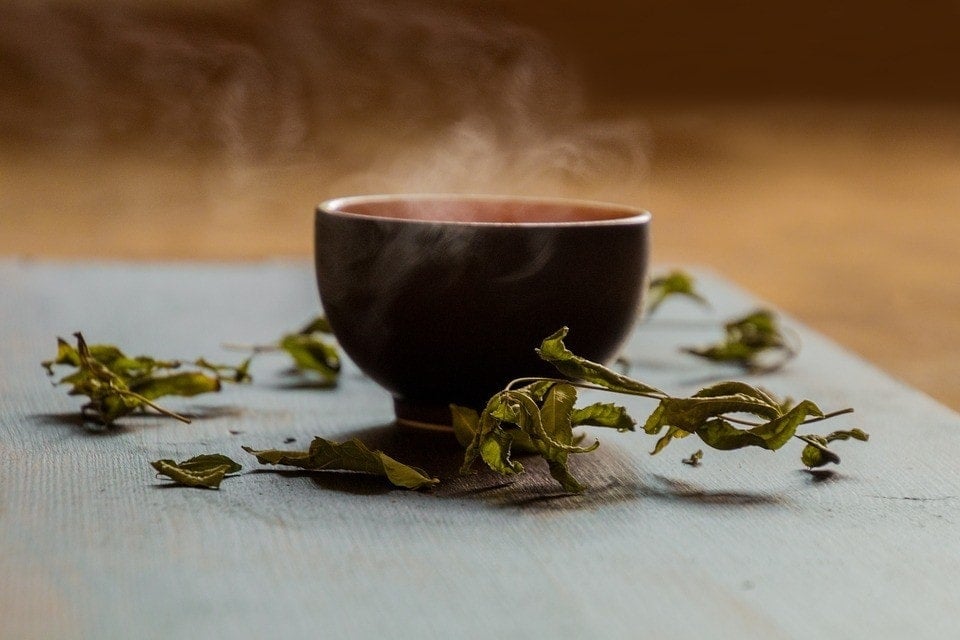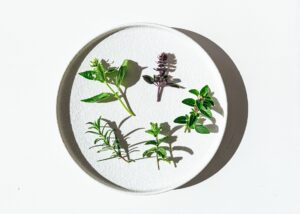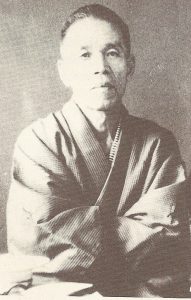Unlike black tea, green tea is not oxidized, but heated or roasted after picking to prevent this from happening. This way the leaves keep their fresh green color and the tea keeps all of its healthy ingredients. Afterwards it only needs to be rolled and it is ready for your cup.
Green tea and its concentrated version, matcha powder, are very popular because they are rich in valuable ingredients and at the same time have a low allergy potential. However, people who take beta blockers need to be careful: substances in green tea and green tea extracts can impair the effectiveness of the drug. For this reason, green tea is also taboo during chemotherapy or a cancer diet.
Question:
Why are healthy products such as green tea, ginger, natron, miso soup, umeboshi, seaweed, bitter apricot kernels (vitamin B-17) and many other healthy products forbidden during a poisoning cure – also called chemotherapy?
Answer:
The healthy products inhibit the harmful effects of the chemo-cell poison. Is that what the pharma barons want? No! Then doctors are just phonographs? Yes.
Green and black tea leaves from the same bush
Both green and black tea leaves come from the same bush. The processing is crucial: black tea is oxidized, green tea is unoxidized. As a result, green tea is particularly rich in polyphenols. They are among the antioxidants that can trap free radicals in our body and thus protect us from symptoms. Green tea has been shown to be effective in studies in the early stages of prostate cancer and against chronic lymphocytic leukemia (CLL). Studies have also shown that green tea is good for the stomach, protects the heart and can help with weight loss, has a positive effect on sugar metabolism and in individual cases improves blood pressure.
Alternative to coffee
The tea leaves for the matcha powder are picked by hand at the beginning of May. After many more steps, all stems and veins are removed from the dried leaves and these are ground to a fine powder with granite stone mills. All of this makes matcha tea quite expensive. But the powder is rich in tea caffeine, theanine and caffeine. These ingredients wake you up and promote concentration. Foamed in hot water, Matcha is a full alternative to coffee.
It also contains minerals such as iron, zinc and calcium, as well as vitamins C, E and A. Around a third of the low-calorie matcha tea consists of protein. In addition, the abundant secondary plant compounds such as chlorophyll, carotenoids and catechins have an antioxidant effect and protect the body from free radicals – which promote cancer cell growth. Matcha tea has a very high so-called ORAC value (Oxygen Radical Absorption Capacity), which measures the antioxidant power of a plant. In addition, the plant substances inhibit inflammatory processes in the body. This effect could be useful in multiple sclerosis or Alzheimer’s therapy.
Green tea also contains caffeine! One cup of green tea contains approximately 50 mg of caffeine. The special thing about the caffeine in green tea is that it is bound by so-called tannins and therefore unfolds its effect more slowly than in coffee. The caffeine boost in coffee comes quickly, but is gone just as quickly. In green tea, the caffeine power works more slowly, but lasts longer.
By the way, tea caffeine and caffeine are the same. From a purely chemical point of view, there is no difference.
The tannins are easily released from the tea right from the start. As a result, a part of the tea caffeine is bound to the tannins from the beginning. In order for your body to be able to absorb the tea caffeine, it must first remove it from the tannins. This process takes a while. And because coffee has less tannins than green tea, for example, the “difference” between tea caffeine and caffeine occurs.
Summarized:
Caffeine is absorbed and processed faster by the body. The caffeine boost is therefore higher. Tea caffeine is processed more slowly by the body. The caffeine rush is less strong, but longer lasting.
I recommend Japanese green tea with no tea caffeine (caffeine). For example Kukicha and Hojicha. These are the gently roasted branches and leaves from the green tea tree.








1 thought on “Is green tea really healthier than coffee?”
Thank you very much for this healthy and delicious recommendation 🙏.
Now, when I visit my parents, I always have a cup of delicious Kukicha tea with them …